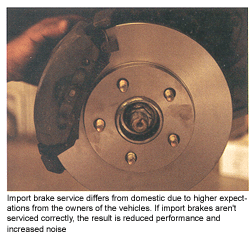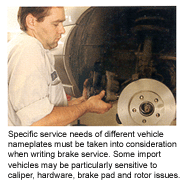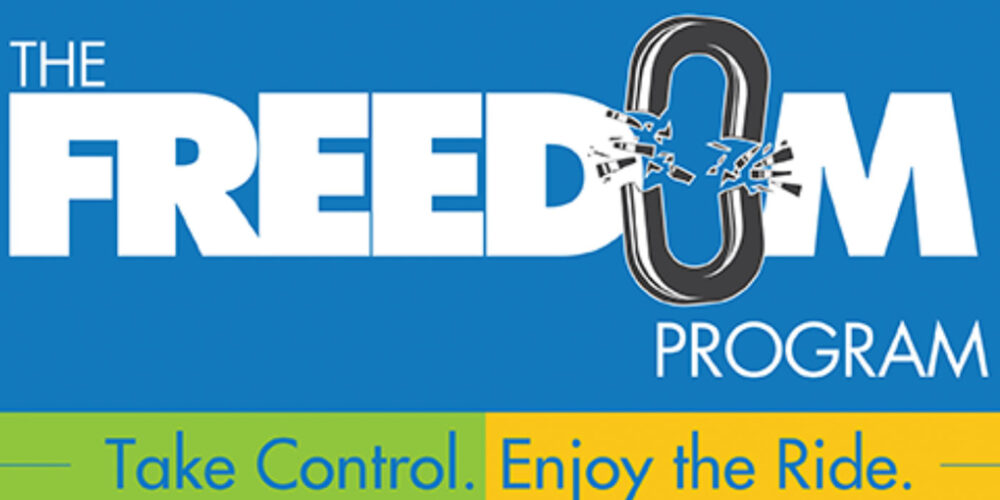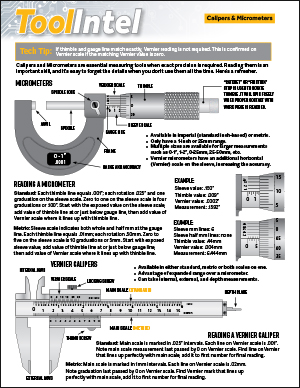Although the industry has seen anti-lock braking systems (ABS) become standard equipment on modern imports, the majority of brake service still focuses on the replacement of brake pads and rotors. Rotor replacement, of course, has changed because new rotors have become a more cost-effective method of resolving pedal pulsation and brake shimmy problems associated with excessive disc run-out and lack of parallelism. Of course, the issue with rotors is, “Do we resurface or replace?”
CASE STUDY
To give the issue a real-world perspective, let’s look at a 1997 Subaru Forester that I’m expecting to come into my shop with a brake pulsation complaint. During the initial interview, it becomes obvious that, depending upon whether he keeps or sells the car, the owner might be looking at several different service options.
 Of course, unless it’s an unlikely case of a bent wheel or a tire problem, the most probable cause is a lack of parallelism in one or more brake rotors. The Subaru came out of a relative’s estate, has been well maintained, was driven in metro areas, and has likely had the brake rotors resurfaced at least once, or perhaps twice, in the 60,000 miles it’s been driven.
Of course, unless it’s an unlikely case of a bent wheel or a tire problem, the most probable cause is a lack of parallelism in one or more brake rotors. The Subaru came out of a relative’s estate, has been well maintained, was driven in metro areas, and has likely had the brake rotors resurfaced at least once, or perhaps twice, in the 60,000 miles it’s been driven.
Consequently, it’s very likely the Subaru may need the brake rotors replaced.
RESURFACE VS. REPLACE
During any initial service write-up, the above information should be developed into several different service scenarios. To do this, let’s analyze some numbers. For purposes of illustration only, let’s say that two brand-new rotors immediately available from a local jobber sell for $70 each and cost $35 each on a “master installer”pricing schedule. According to the service writer’s experience, replacing both rotors shouldn’t take more than a half hour. If the work is billed on a $70 hourly basis, a shop makes 50 percent of its hourly shop rate plus $70 profit from the new rotors. This amounts, in the most typical cases, to about $105 gross profit for 30 minutes of work.
Now, let’s look at resurfacing. A shop still has 30 minutes of removal and replacement (R&R) time invested. Depending upon the shop’s equipment, it may have at least another 30 minutes invested in resurfacing the rotors or as much as an hour if an older off-car lathe setup is used to cut and refinish the rotor.
QUALITATIVE DIFFERENCES
The next issue involved with rotor resurfacing or replacement is the overall quality of the finished product. Providing that it’s been correctly stored and handled, the new rotor is perfectly machined and finished. On the other hand, the resurfaced rotor will likely end up near the discard specification and clearly won’t have the mirror-like finish of the new rotor. Under severe use, the refinished rotor is obviously going to provide much less service life because it’s going to overheat much faster due to less mass. In addition, it has less material to wear away before it reaches discard specification.
Let’s say, for purposes of illustration, that the resurfaced rotor will have a service life of about 10,000 miles before reaching discard specs. The service writer therefore has 30 minutes invested in the new rotors and 1 hour invested in the old rotors. Our gross profit for replacing with new rotors is $105 and our gross profit for resurfacing the old rotors is $70.
In the case of our ’97 Subaru, the brake pads were inspected when the owner first bought the car, so the shop may not be able to sell new pads in order to boost the profitability of resurfacing the rotors. Of course, the retail cost to the consumer of $70 per rotor and a hypothetical $35 installation fee would amount to $175 as opposed to $70 for the service-only resurfacing process. Consequently, there is $105 difference in cost to the customer. The service writer’s job, of course, is to explain the advantages of either option to the customer and let him make the decision.
ADDING PADS
Let’s toss a real-world service-writing dilemma into the mix on our ’97 Subaru Forester. Let’s imagine that the brake pads have 30% of their service life remaining, which might mean that the customer will need to return 10,000 miles later for a brake pad replacement.
Again, for purposes of illustration, let’s also say that the pads are a simple drop-in installation with no pattern-failure caliper issues or hardware requirements. According to one aftermarket supplier, the OE specification for our ’97 Forester calls for ceramic pads. Hypothetically speaking, let’s say that one aftermarket source offers a “premium”pad retailing for $95 per set with a hypothetical dealer cost of $65. The premium pads would add $30 profit to the rotor replacement. Added to the new rotors, the customer cost would be $270 for complete pad and rotor replacement with a gross profit to the shop of $135. Added to the resurfaced rotors, the customer cost would be $165 with a gross shop profit of $95.
PACKAGING BRAKE SERVICES
Without making the math more complicated than it has to be, it’s obvious that the customer is being offered $270 and $165 price options for installing both rotors and pads. For $270, he can be offered the added performance of premium pads riding on new rotors with an anticipated service life of about 30,000 miles. For $165, he is offered the lesser performance of premium pads riding on resurfaced rotors with a service life of about 10,000 miles.
 Of course, the math would be different if the service writer explores the option of installing less expensive “OE-spec”ceramic brake pads. Nevertheless, I think the above numbers illustrate that the most cost-effective option for the long term is installing new rotors and that the most cost-effective option for the short term is resurfacing the old rotors.
Of course, the math would be different if the service writer explores the option of installing less expensive “OE-spec”ceramic brake pads. Nevertheless, I think the above numbers illustrate that the most cost-effective option for the long term is installing new rotors and that the most cost-effective option for the short term is resurfacing the old rotors.
WRITING BRAKE SERVICE
Currently, the import brake service market is very price sensitive and therefore very competitive. Import brake services differ from domestic due to higher expectations from the owners of the vehicles. If import brakes aren’t serviced correctly, the result is reduced performance and increased noise.
From the customer’s point of view, price is important. The mitigating factor, of course, is his expectations concerning the performance and durability of the brake pad and rotor replacement.
The key to pricing import brake service is to understand the time requirements for replacing pads, and replacing or refinishing rotors.Obviously, once the rotors have been removed, replacing brake pads, calipers and hardware requires little additional time investment.
Of course, the specific service needs of different vehicle nameplates must also be taken into consideration when writing brake service. Some vehicles, for example, may be particularly sensitive to caliper, hardware, brake pad and rotor issues. Some imports demand a specific lining specification, whereas others demand extensive hardware replacements. Others might be prone to caliper failure. Consequently, it’s important to construct service packages that address the issues posed by different nameplates.
If a service writer spends a few minutes with a pocket calculator, he can construct a number of brake service packages that address both nameplate brake service issues and the prospective customer’s budget. As illustrated by our prospective brake service on a 1997 Subaru Forester, the service writer might offer three service options costing $70, $165 and $270. When nameplate-specific needs are taken into consideration, a service writer may offer a number of brake service options that can fit any import owner’s pocketbook. Sure, it’s a little extra work, but it is also work that can pay off handsomely by increasing a shop’s market share of brake services in what has become a very intensely competitive brake service market.












